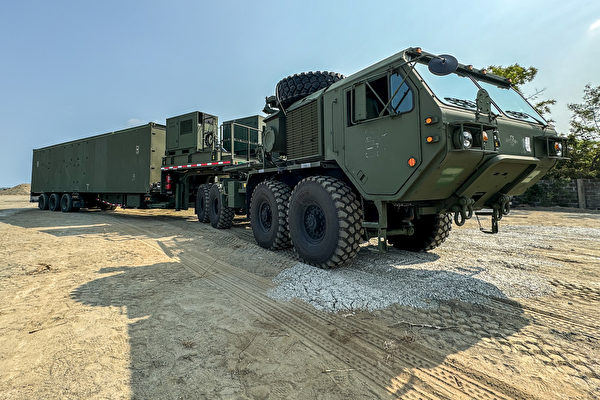On Monday, October 21st, a US general emphasized the “extreme importance” of the US Army deploying medium-range missile systems to the northern part of Luzon Island in the Philippines. This deployment aims to enable joint training between American and Filipino forces, in preparation for the possibility of using such heavy weaponry in the conditions of the Asian archipelago.
The Chinese Communist Party has been frequently conducting military actions in the Taiwan Strait and the South China Sea, including military exercises around Taiwan, sending military aircraft and ships to intimidate Taiwan, and dispatching coast guard ships to harass Filipino supply vessels in the South China Sea, resulting in injuries to Filipino personnel. In response to China’s bullying behavior in the Indo-Pacific region, the US government is actively taking steps to strengthen military alliances in the region. Following the escalation of tensions between the Philippines and China, the Philippines is also making efforts to bolster its territorial defense.
On April 7th, the US military dispatched the first Multidomain Task Forces (MDTF) Strategic Fires Battalion (SFB) to the Philippines via a C-17 transport aircraft from the US mainland. This marked the first deployment of the US medium-range missile system codenamed “Typhon” on the northern part of Luzon Island in the Philippines. It is the first time this system has appeared in the first island chain.
The “Typhon” missile system is a land-based weapon capable of launching Standard-6 missiles and Tomahawk ground-attack missiles with a range of over two thousand kilometers, reaching the southeastern coast of China and the sensitive areas of the South China Sea and the Taiwan Strait. Experts view this move as a demonstration of US military strength in the Indo-Pacific region to deter China.
When asked how this missile system would assist in joint combat training for the Philippines, Major General Marcus Evans, commander of the 25th Infantry Division based in Hawaii, stated, “Its role is to give us an opportunity to understand how to employ this capability, the challenges here are fundamentally different than anywhere else in the region.”
Evans continued, “Last year, we also deployed the HIMARS (High Mobility Artillery Rocket System), and we can move these systems around the archipelago with fixed-wing aircraft.” HIMARS is a highly mobile artillery rocket system, a vehicle-mounted launcher capable of firing GPS-guided missiles to hit distant targets.
“These actions are very important because you have to work in this environment, but most importantly, you have to work with our partners in the Philippines to understand how to integrate these systems into their operations,” Evans further stated, without revealing specific details.
The “Typhon” missile system was initially scheduled to be withdrawn from the Philippines last month. However, three Filipino security officials recently told the Associated Press that despite Chinese concerns, the long-standing treaty allies have agreed to indefinitely keep the missile system in the northern part of the Philippines to enhance deterrence.
This Filipino official requested anonymity as they are not authorized to publicly discuss sensitive matters regarding the US missile deployment.
Recently, Evans flew to Manila to discuss next year’s annual allied military exercises in the region with the Philippine military, particularly the Salaknib drills aimed at enhancing the preparedness of thousands of American and Filipino soldiers in increasingly realistic scenarios.
“In concept, this will be a larger and more complex exercise,” Evans introduced.
He added that the Salaknib exercise might include joint training exercises from the jungles in the northern part of the Philippines to former US military bases in the region.
“We also plan to bring in new equipment that was not available last year and train with our Philippine Army counterparts,” he did not provide specific details.
“Our job is to increase readiness by 1% every day in terms of warfighting with our Filipino Army counterparts,” he said. “The establishment of this relationship and enhancing warfighting capability should eliminate any doubts about the importance of our alliance and cooperation with the Philippine military.”
On Sunday, Evans and other US Army officers attended a commemorative ceremony in Manila, honoring a historic moment in US-Philippine relations. In October 1944, General Douglas MacArthur fulfilled his promise to return to the Philippines, wading ashore in Leyte province, central Philippines, to help liberate the country from Japanese occupation.
MacArthur, a US Army and Philippine Army general, held the rank of five-star general and Field Marshal in the Philippine Army. He served as Chief of Staff of the US Army in the 1930s and played a significant role in the Pacific theater of World War II. MacArthur was one of only five “five-star generals” in the US Army and one of only two military personnel awarded the rank of Field Marshal in the Philippine Army. He is also the only US general to have participated in World War I, World War II, and the Korean War.
On Monday, Evans and US military soldiers held a solemn ceremony at the Manila American Cemetery in the metropolitan area, laying wreaths. The cemetery is the largest US World War II cemetery and memorial in the world.
He expressed that the Leyte Gulf ceremony reflects the long history of trust forged between the American and Philippine militaries during times of war and peace.
“The trust has been built over eighty years,” Evans emphasized.

